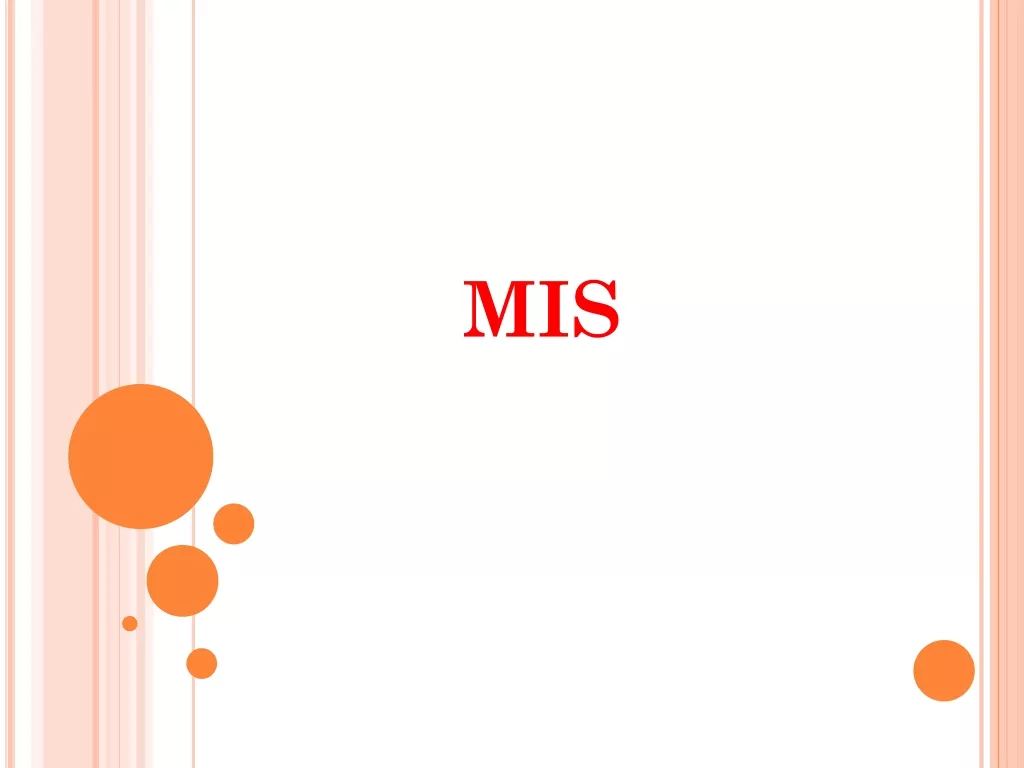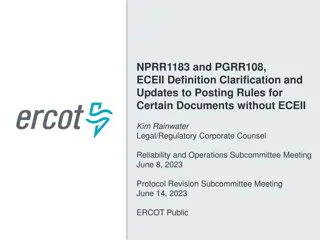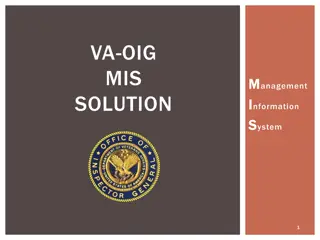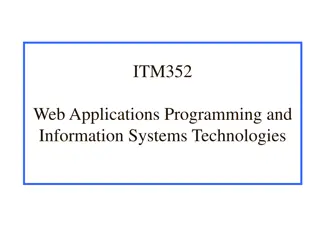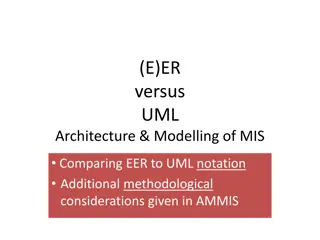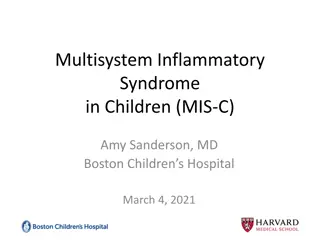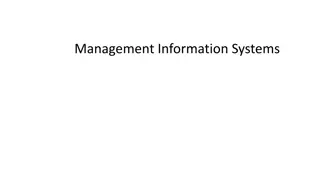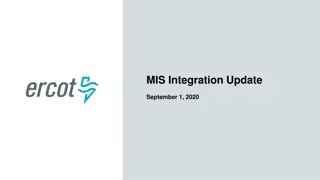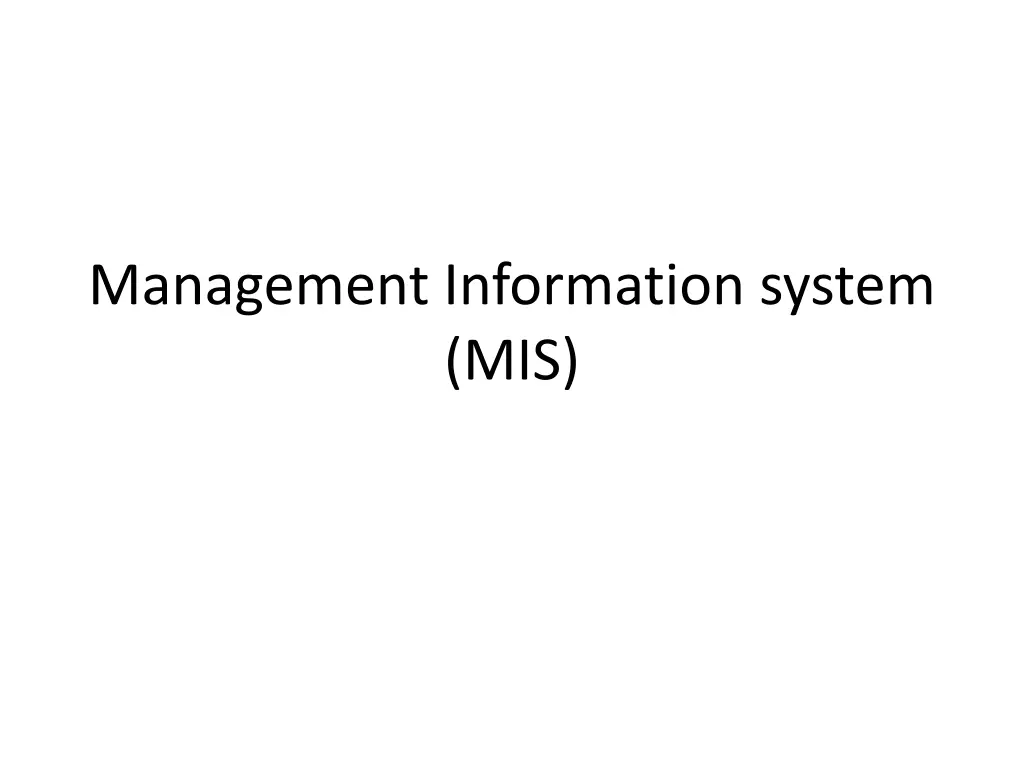
Effective Safety Management Information Systems in Manufacturing
Enhance safety in manufacturing with a comprehensive Management Information System (MIS) tailored to incident reporting, risk assessment, compliance monitoring, training management, and more. Explore how ABC Manufacturing implements an MIS to prioritize safety measures and streamline safety processes for optimal performance.
Download Presentation

Please find below an Image/Link to download the presentation.
The content on the website is provided AS IS for your information and personal use only. It may not be sold, licensed, or shared on other websites without obtaining consent from the author. If you encounter any issues during the download, it is possible that the publisher has removed the file from their server.
You are allowed to download the files provided on this website for personal or commercial use, subject to the condition that they are used lawfully. All files are the property of their respective owners.
The content on the website is provided AS IS for your information and personal use only. It may not be sold, licensed, or shared on other websites without obtaining consent from the author.
E N D
Presentation Transcript
Management Information System (MIS) In safety management, a Management Information System (MIS) refers to a comprehensive framework for collecting, processing, storing, and disseminating data and information related to safety within an organization. It encompasses various software, hardware, procedures, and people involved in managing safety-related data and generating reports for decision-making purposes.
In the context of safety, an MIS typically includes: Incident Reporting: Capturing information about accidents, incidents, near misses, and other safety-related events. Risk Assessment: Analyzing potential hazards and evaluating risks to prioritize safety measures. Compliance Monitoring: Tracking regulatory requirements and ensuring adherence to safety standards and protocols. Training Management: Managing records of safety training sessions, certifications, and competency assessments for employees. Performance Measurement: Monitoring safety performance indicators and key performance metrics to assess the effectiveness of safety initiatives. Emergency Response Planning: Developing plans and procedures for responding to emergencies and communicating critical information. Data Analysis and Reporting: Analyzing data collected from various sources to identify trends, patterns, and areas for improvement, and generating reports for management and regulatory purposes.
Scenario ABC Manufacturing Company operates a large factory that produces automotive components. Safety is a top priority for ABC, given the inherent risks associated with manufacturing processes. To effectively manage safety, ABC has implemented a robust MIS tailored to their safety management needs.
Example of MIS in Safety Management at ABC Manufacturing: Incident Reporting: Employees are encouraged to report any safety incidents or near misses through an online portal accessible from the company intranet. When an incident is reported, relevant details such as location, time, nature of the incident, and individuals involved are recorded in the MIS database. Risk Assessment: ABC conducts regular risk assessments of various manufacturing processes to identify potential hazards. The MIS integrates risk assessment data, allowing safety managers to prioritize mitigation strategies based on the severity and likelihood of identified risks.
Example of MIS in Safety Management at ABC Manufacturing: Compliance Monitoring: The MIS includes a compliance module that tracks regulatory requirements from relevant occupational safety and health authorities. Safety managers receive automated alerts for upcoming regulatory deadlines and ensure that necessary compliance measures are in place. Training Management: The MIS maintains records of safety training sessions conducted for employees, including topics covered and attendance. Employees' training profiles are updated in real-time, ensuring that they receive appropriate safety training based on their roles and responsibilities.
Example of MIS in Safety Management at ABC Manufacturing: Performance Measurement: Key safety performance indicators (KPIs) such as incident rates, lost-time injuries, and near-miss frequency are monitored through the MIS dashboard. Safety managers analyze trends in KPIs to identify areas for improvement and implement targeted safety initiatives. Emergency Response Planning: ABC's emergency response plan is documented within the MIS, outlining procedures for various emergency scenarios such as fires, chemical spills, or medical emergencies. Emergency contact information, evacuation routes, and assembly points are readily accessible to all employees through the MIS platform.
Example of MIS in Safety Management at ABC Manufacturing: Data Analysis and Reporting: The MIS generates comprehensive reports on safety performance, incident trends, and compliance status for management review. Data analysis tools within the MIS facilitate root cause analysis of incidents and support evidence-based decision-making to enhance safety protocols.

